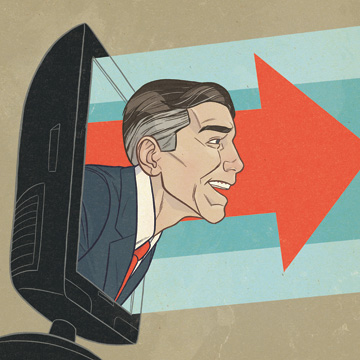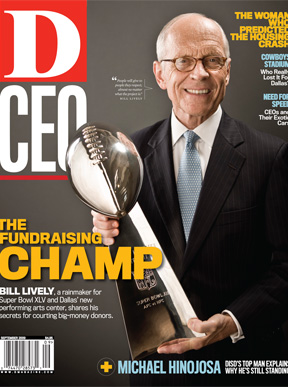With apologies to Hamlet and Shakespeare, the question for today’s CEOs isn’t “To be or not to be.” It’s whether or not to be on TV. And, being on “TV” nowadays means more than traditional television, such as appearing in your company’s ads or on the news. Today using television also means reaching your key audiences via video where you look directly into the camera and talk, person-to-person, to the listener.
A significant portion of the populace today doesn’t read, at least in the sense that their parents did. They view and listen. They cruise around on the Internet, and they want to see and hear the person speaking—“communicating”—with them.
The time to get good at this medium or channel of communication is before you really need it. Not only do you, as the CEO, need these skills, and a comfort level, but you also need to be able to judge whether you’re getting good advice.
A current example of what not to do comes from the president of Domino’s Pizza. Recently, while two Domino’s employees were clowning around, they videotaped themselves sneezing on food and putting food in revolting areas of their bodies. You get the picture. So did YouTube, where they posted the video (though apparently, and thankfully, they didn’t serve the food to customers). The video promptly went global. Domino’s learned of the posting when customers called franchise owners, headquarters, and other employees.
It took Domino’s 24 hours to get a statement together and posted on its web site, and 48 hours for them to get its president on a YouTube/web-posted video of its own. And, the company got it wrong. The poor guy is looking off camera and obviously reading from a teleprompter. The words, which would have been fine in a printed statement, seemed staged and labored. I have no doubt the CEO meant every word, but he lost the power of eye contact and person-to-person conversation. The audience, and customers of Domino’s, don’t want to be read to; they want to be engaged.
When you use this new medium, you’ll be surprised at the reaction. The CEO of a large hospital system—an occasional client of mine—prided himself on his frequent and authentic e-mails to the system’s employees. In December, in conjunction with a downsizing of 100 employees, he decided to use what I call the direct point-of-view, direct-to-camera channel. He spoke from the heart about what was going on and how he regretted it; he also reiterated the company’s commitment to treating people fairly and its overall mission. Usually, his weekly e-mails drew a dozen or so responses, typically from other senior management. His first POV video generated hundreds of responses from every level of management and employee. The CEO was stunned.
When should you use “direct POV”? You should use it as a component of almost every kind of communication for internal and external audiences. Focus on where you need to be most persuasive, and where you want the listener or audience to be able to repeat, word-for-word, your message or story. (See the accompanying story for tips on what to do and what not to do.) And remember, the goal isn’t to be polished. It’s to be able to deliver a message you’ve rehearsed—but are not reading—in a concise, authentic manner.
Spaeth is one of the country’s leading communications strategists. After serving as President Ronald Reagan’s director of media relations, she founded Dallas-based Spaeth Communications in 1987. She is also a lecturer at Southern Methodist University’s Cox School of Business.






